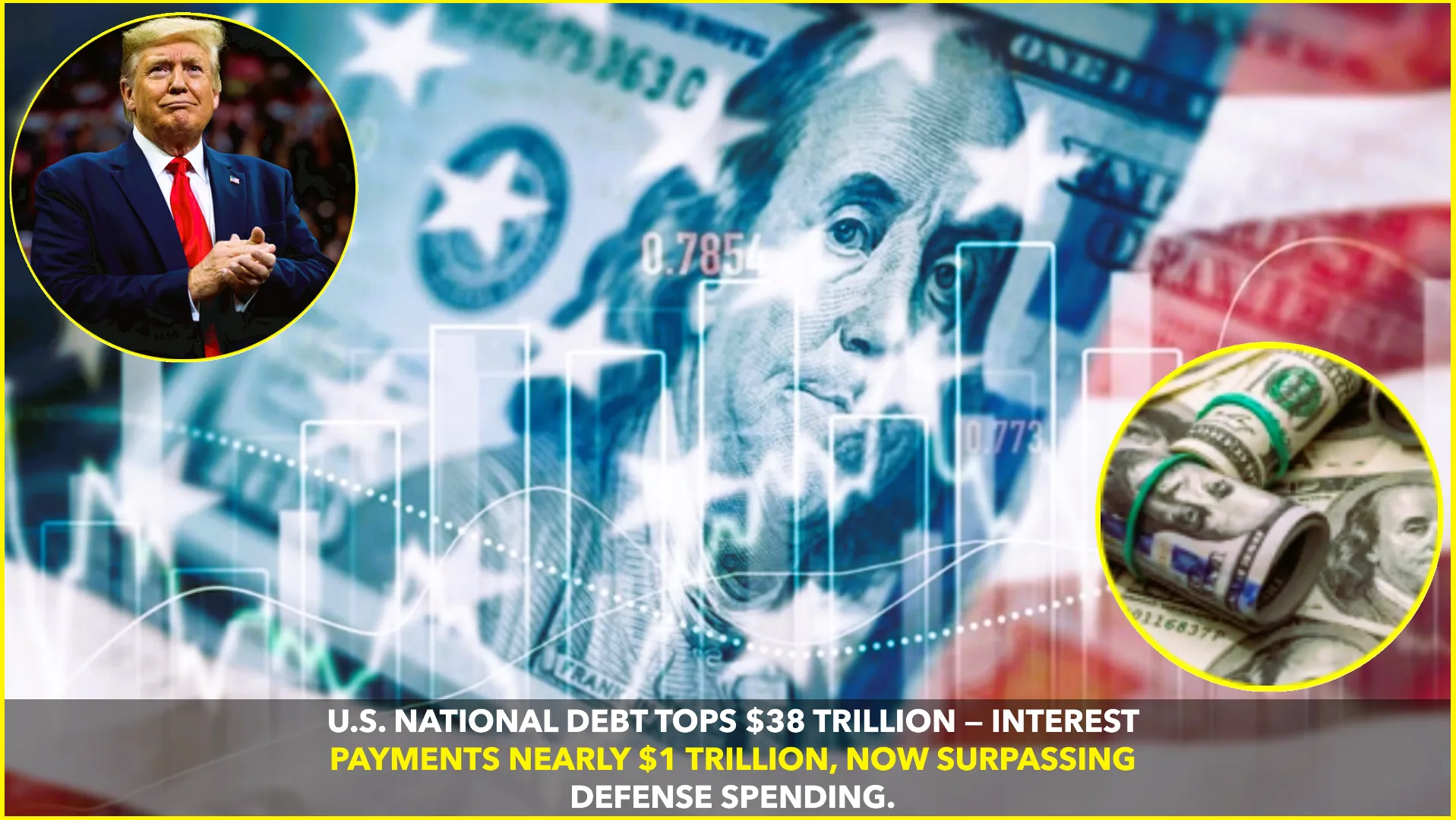WASHINGTON, D.C. — The U.S. national debt has officially surpassed $38 trillion, reaching its highest level ever recorded, according to the U.S. Treasury Department data. This staggering figure amounts to over $100,000 per citizen, a burden that continues to grow by the second.
According to PBS NewsHour, the United States added its latest trillion dollars of debt in record time, marking the fastest debt accumulation outside the pandemic era. This surge reflects the government’s ongoing challenge to manage spending and revenue amid rising interest rates and persistent budget deficits.
A Debt Growing Faster Than Ever
The national debt grew from around $37 trillion in August to over $38 trillion by late October 2025 — an unprecedented pace that highlights the government’s increasing reliance on borrowing. As per Al Jazeera, the rapid escalation has intensified global concerns about the long-term sustainability of U.S. fiscal policy, especially as Washington faces political gridlock over budget priorities.
Analysts estimate the U.S. debt is increasing by nearly $70,000 every second, making it one of the fastest-growing government obligations in the world.
Interest Payments Now Exceed Defense Spending
One of the most alarming indicators is the interest burden. The U.S. is expected to spend nearly $1 trillion annually just on interest payments — a figure that now exceeds the entire defense budget, according to Reuters. Economists warn that America is now borrowing money simply to pay interest on previous borrowing, signaling a deepening debt spiral.
This dynamic leaves the government with less fiscal flexibility, as rising rates magnify the cost of servicing the existing debt.
The Debt-to-GDP Ratio: A Warning Sign
As per Newsweek, the U.S. debt-to-GDP ratio has climbed beyond 120 percent, meaning the country owes more than it produces in a year. This ratio is often viewed as a red flag by investors and credit agencies, indicating that America’s debt is growing faster than its economy.
A high debt ratio also risks weakening investor confidence in U.S. Treasury bonds — long considered the world’s safest asset — which could drive borrowing costs even higher.
Why Is the Debt Rising So Fast?
Several key drivers have contributed to this explosion in national debt:
- Persistent deficits: The federal government continues to spend more than it collects in tax revenue.
- High interest rates: The Federal Reserve’s rate hikes have sharply increased borrowing costs.
- Entitlement spending: Programs like Social Security and Medicare are consuming larger portions of the budget as the population ages.
- Partisan gridlock: Delays in passing spending bills and frequent shutdown threats add uncertainty, pushing the government toward stopgap funding and additional borrowing.
A report by CBS News highlighted how political divisions in Congress have worsened fiscal management, with repeated budget standoffs and delayed debt ceiling agreements fueling investor anxiety.
Global Markets Are Watching
International investors and credit agencies are keeping a close eye on U.S. Treasury bond yields. Rising yields — a reflection of investor concern — have already rippled through global markets, pushing up interest rates worldwide.
According to AP News, market experts warn that if confidence in U.S. debt erodes, the ripple effect could shake global financial stability. America’s Treasury securities have long been viewed as the foundation of the world’s financial system — a perception now facing unprecedented pressure.
Experts Sound the Alarm
Economist Tim Nash, writing for Our Midland, described the situation as a “credit warning shot.” He noted that while the U.S. has weathered large debts before, today’s combination of soaring interest payments, political dysfunction, and global economic uncertainty makes the current moment uniquely dangerous.
“America isn’t just borrowing for tomorrow anymore — it’s borrowing to pay for yesterday,” Nash wrote.
The Road Ahead
Reducing the debt will require politically difficult choices. Experts suggest a mix of spending reforms, tax adjustments, and sustained economic growth to stabilize debt levels. However, given the pace of borrowing, the window for gradual action is closing fast.
If the debt continues to grow unchecked, future generations could face higher taxes, reduced social benefits, and slower economic growth.
For now, the U.S. remains in what many economists call a “debt spiral” — borrowing more each year simply to stay afloat. Whether policymakers can break that cycle before it turns into a full-blown fiscal crisis remains the trillion-dollar question.










